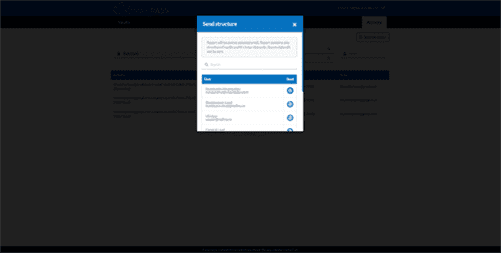Both review and inspection are crucial and necessary components of software development. They are regarded as potent instruments that may be used to spot and eliminate flaws if they are there before they happen and affect production. Errors in software designs and requirements are the primary cause of problems in software products. Both software requirements and design are crucial, and both should be thoroughly examined.
Phase Injected is always earlier in the software development lifecycle than the Phase Detected. Phase Injected can be known only after a proper root-cause analysis of the bug. Phase Detected indicates the phase in the software development lifecycle where the defect was identified. Test coverage measures in some specific way the amount of testing performed https://www.globalcloudteam.com/ by a set of tests (derived in some other way, e.g., using specification-based techniques). Wherever we can count things and can tell whether or not each of those things has been tested by some test, then we can measure coverage. A software development model that illustrates how testing activities integrate with software development phases.
Top-notch Examples of Natural Language Processing in Action
This topic will guide you on how to apply the defect management process to the project Guru99 Bank website. But as the search of the dot matrix printer fails, the print dot matrix printer error is never detected. Use defect management tools or project management tools such as JIRA, Trello, GitHub, and Slack for effective allocation, resolution, and reporting. In the absence of an in-house device lab, opting for a cloud-based testing service that provides real device browsers and operating systems is the best option.
Another important way to prevent defect cascading is to ensure that there is good communication between the different teams involved in the development process. This includes the software development team, the quality assurance team, and the customer support team. The defect management process is at the heart of software testing. At the level of brass tacks, software tests are about finding and fixing bugs. The defect management process in Agile is vital because development sprints must also include involvement, participation, and action from testers.
Join Webinar on Test Automation for Salesforce Apps and get 30 days free trial
Sometimes it is difficult to determine that a certain error is a software deviation. Latent and masked bugs are hard to detect and reproduce as they do not stay on the surface. Regardless, a qualified tester must recognize and identify such bugs by implementing the suitable tools and test cases. A masked bug is an existing error that has not yet caused a failure just because another error has prevented that piece of the code from being performed.
- Component testing may be done in isolation from the rest of the system depending on the context of the development life cycle and the system.
- Masked Defect is a type of defect that is hidden in the software and hasn’t caused a failure, because another defect has prevented that part of the code from being executed.
- Pick the right people, tools, and strategy so that software can be stripped of faults and results in creating only delighted users.
- This includes the software development team, the quality assurance team, and the customer support team.
- With testing being a crucial element for software development, you need access to a seamless and robust testing platform to ensure that the errors are rightly reflected.
- In simple terms when a defect reaches the end customer, it is called a failure while the defect is identified internally and resolved; then it is referred to as a defect.
This process can be easier and more convenient with the proper plan and resources. To solve this, let’s understand what is defect clustering, its principles, defect types, and different methods of defect prevention. All team members must be aware of the potential for defect cascading. This way, they can be on the lookout for any signs that it might be happening. By communicating effectively, you can ensure that all teams are aware of any defects that are discovered.
What are the common types and causes of defects in software testing and how can you prevent them?
For example, a defect can be categorized as critical, high, medium, or low severity depending on how much it affects the functionality, reliability, or safety of the software. Similarly, a defect can be assigned a high, medium, or low priority based on how urgently it needs to be fixed. Other common defect types are functional, non-functional, cosmetic, performance, security, compatibility, or usability defects.
The number of defects found by a test phase, divided by the number found by that test phase and any other means afterward. If a Defect is some time times only appearing then that Defect is not a producible defect, we have to provide proof for locating it. QA process, which nearly always results in a better-functioning team. Once defects have been found, identified, and corrected, step back and consider the big picture. The coordinator is primarily accountable for promoting simple team member communication, planning, developing defect avoidance guidelines, etc. Trivial issues are those that don’t affect how the system works and can be overlooked, such spelling errors.
Q. 34: What does a typical test report contain? What are the benefits of test reports?
Additionally, if the defects are severe enough, it can lead to customers stopping using the product or requesting a refund. This can cause delays in the development process as each new defect that is discovered needs to be fixed before the product can be released. Defect cascading can impact the development process in several ways. Another common heuristic identified by Elisabeth Hendrickson is the ‘Goldilocks’ heuristic. Goldilocks reminds testers to try entering data into data entry fields that are ‘too big’, ‘too small’ and ‘just right’.

Since the application failed to search DMP, instead goes to the laser printer, the DMP printing error was never detected. As a result, the DMP print remained masked, this is called a masked defect. Similarly in software testing, latent defect is a systematic flaw that accompanies the software during the production process, and passes the pre-production testing and extended use. This flaw is later identified when the software is expected to perform a particular task in the absence of regular scenarios.
Q. 32: While monitoring your project what all things you have to consider?
This will resolve the issue and hide the defect of unhandled exception firing. Spend more time for testing execution, especially what is defect masking for reviewing the test execution results. Once a defect has been resolved and verified, the defect is changed status as closed.

That is why the print error of a dot matrix printer is a masked software bug. Team members usually think of ‘defect’ as meaning something is wrong. But, how do testers really identify what’s wrong when testing a program?
Q. 87: What is the difference between re-testing and regression testing?
It is essential that project members agree beforehand on the categorization so as to avoid arguments, conflicts, and unhealthy bickering later. Related Module / Component indicates the module or component of the software where the defect was detected. This provides information on which module / component is buggy or risky. The process of intentionally injecting bugs in a software program, to estimate test coverage by monitoring the detection of those bugs, is known as bebugging.
